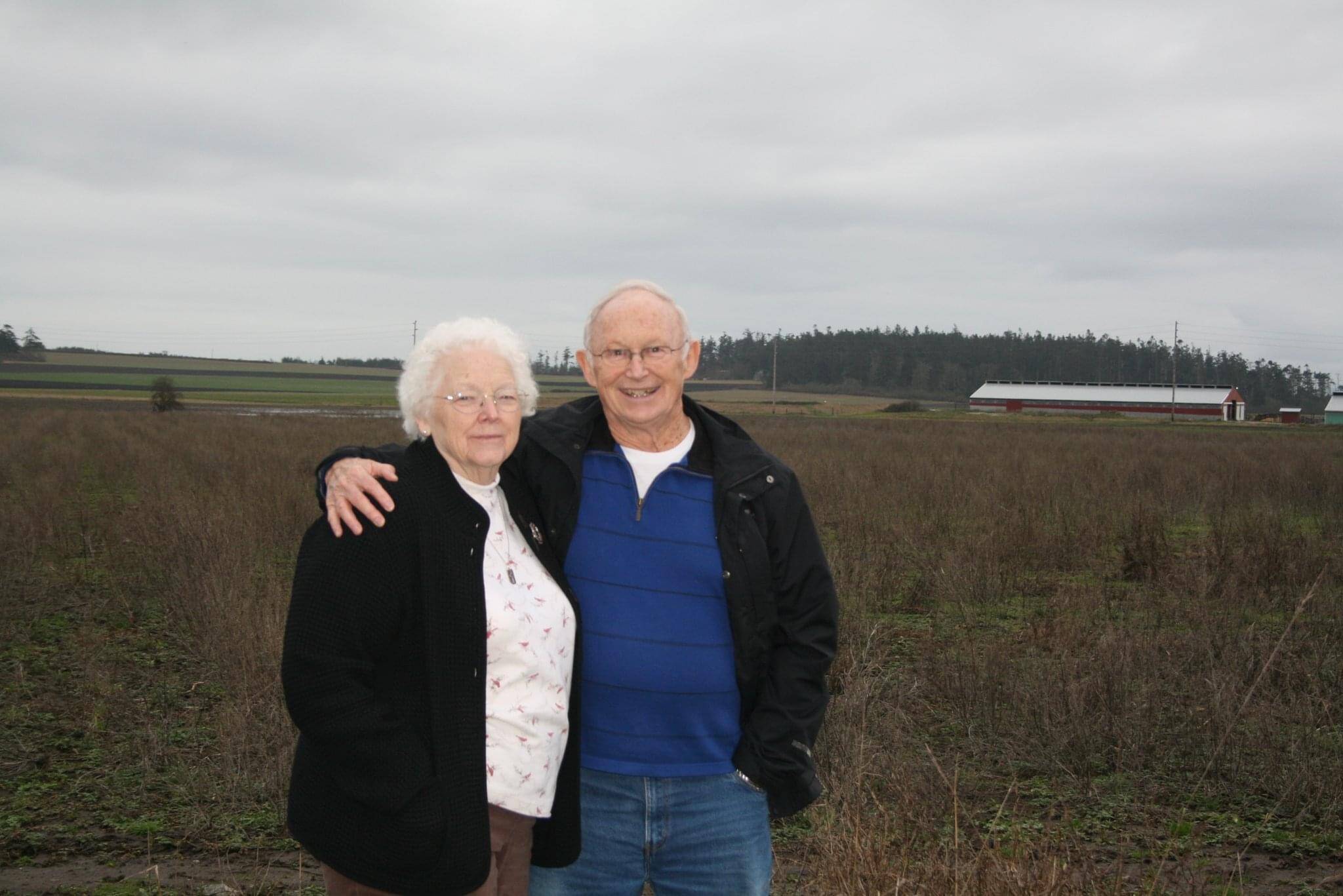Historic Whidbey is calling on preservation-minded islanders to help rescue a historic building from the clutches of strangling vines.
A mid-19th-century house on a farm known as the Engle Family Homestead has become so overgrown with English ivy, blackberry vines, holly and other invasive plants that it is practically indistinguishable from the surrounding trees. Nonprofit Historic Whidbey will host two volunteer events to remove the plants and protect the structure.
Vines and other invasive plants block sunlight and air from reaching the house, preventing it from drying out and causing rot, said Historic Whidbey Executive Director Lynn Hyde.
“Moisture is one of the great killers of old houses,” she said. “This is kind of a triage effort to stop any rot that might be happening because the house isn’t getting any air.”
The Engle Family Homestead is one of the oldest farms on the island and in the state of Washington, Hyde said. Hill Harmon acquired the land and built a house there in 1858. In 1869, he sold the property to Daniel Pearson, a former lighthouse keeper at Admiralty Head.
While working at the lighthouse, Pearson was joined by his daughter, Flora, who would later become the owner of the farm with her husband, William Engle, according to Sarah Viers, a descendant of William and Flora.
Flora came to Washington in 1866 with Asa Mercer, the first president of the University of Washington. Mercer brought a number of unwed women and girls out west in the 1860s, promising brides to the men homesteading on the frontier. Viers said that Mercer was less than forthright with the would-be brides about his intentions, however, promising them jobs.
Flora, for one, did not come to Washington to be a bride, Viers said. Flora worked with her father at the lighthouse and did not marry William Engle until eight years after her arrival on Whidbey Island. The couple moved into the farmhouse on the Engle Family Homestead in 1876.
The farm, which is currently owned by Viers’s parents, Dave and Dolores Engle, has stayed in the family for five generations; Viers and her sisters are part of the sixth generation of Engles who will own the property.
Viers’s grandfather, who lived on the property, farmed the land until the 1960s, when he took a job on the Navy base and began leasing out the farmland instead.
Though Viers and her sisters grew up in California, they spent many summers on Whidbey Island and eventually moved back to the farm when Viers was in high school in the 1990s. The house still contains wallpaper and furniture from some of its pioneer-era inhabitants.
To have that property remain in the family after over a century and a half is special, Viers said, adding that her ancestors’ can-do spirit, tenacity, faith in God and love of Whidbey Island still linger noticeably in the house.
“That feeling is irreplaceable,” she said. “Our goal is to see it restored and have that feeling again — that pioneer spirit and that feeling of time gone by.”
Viers said to have so many people on the island interested in protecting and preserving the home is “an answer to many of our prayers.” She believes Flora, who kept a meticulous record of the area goings-on in her many diaries throughout her life, was aware of the history being made in her day and would want to see the farm preserved.
Work parties to remove the invasive vines will take place in three-hour shifts from 10 a.m. to 1 p.m. and 1 to 4 p.m. July 23 and Aug. 13. Volunteers need not be able to stay for an entire day or shift to participate, though Hyde asked that volunteers arrive at the beginning of a shift to receive safety training.
Around a dozen volunteers each day would be sufficient to get the work done quickly without overcrowding the space, Hyde said. Many people have expressed interest in the August work party as of Monday afternoon, though the July date hasn’t received as much attention.
Participants are encouraged to bring their own tools, as Historic Whidbey has a limited number of tools to share. No power tools will be permitted. Volunteers should also wear gardening gloves to protect from thorns. Prospective volunteers may sign up for one or more shifts by emailing Hyde at historicwhidbey@comcast.net.


